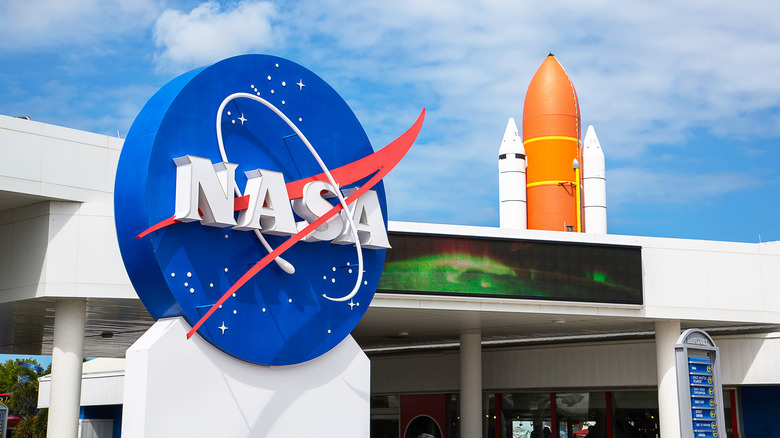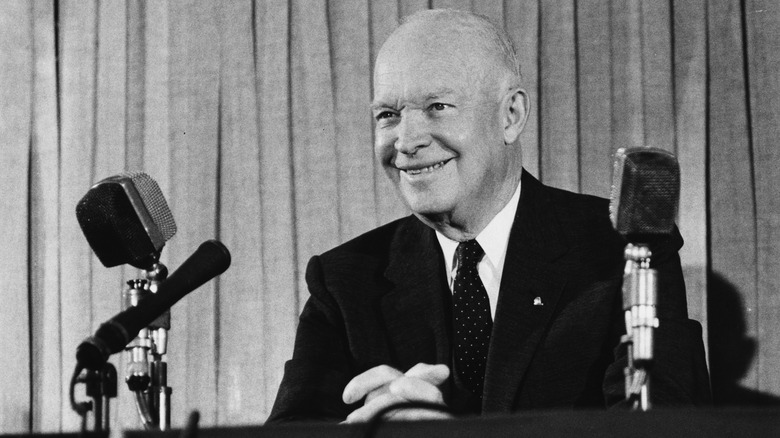How President Eisenhower Helped With The Creation Of NASA
In October 1957, the Soviet Union launched Sputnik 1 into a low Earth orbit. It became the first man-made object in space and the first artificial Earth satellite. It didn't take long for the Soviets to one-up themselves. A month later they launched Sputnik 2, but this one had a living organism on board in the form of Laika — a female part-Samoyed terrier. And thus began the great "Space Race."
The launch of the two Soviet Sputnik satellites shocked the United States, and the country immediately ramped up its attempts at getting into space. A few months later (January 31, 1958), the U.S. managed to put Explorer 1 into space — with no dog aboard, mind you.
Before that successful launch, Congressional hearings had already begun detailing a long-term space plan. It was chaired by Senate Majority Leader Lyndon B. Johnson, who would become the 36th President of the United States six years later. The hearings began in November 1957 and for the next six weeks attempted to answer tough questions regarding America's next steps into space. Should an entirely new government agency be established? Would it be better to assign the space program to an existing agency like the Atomic Energy Commission or the National Advisory Committee on Aeronautics? Or was it better to give agency over the final frontier to an existing arm of the military, like the Army or Air Force, both of which had missile programs? The decision to make this potential new entity a civilian agency was also hotly debated.
President Eisenhower leads U.S. into space
The determinations made in those hearings led to the establishment of the Senate Special Committee on Space and Aeronautics in February 1958 to establish an actual space agency. Senator Johnson was to be its chairman.
However, at roughly the same time, Dwight D. Eisenhower (34th President of the United States), instructed his science advisor to commission the Presidential Science Advisory Committee (PSAC) to study the very same topics. On March 5, 1958, Eisenhower approved the idea that a new civilian space agency would be formed around the National Advisory Committee on Aeronautics (NACA). They were already involved with a number of other "space-related projects" so it made the most sense.
Over the next few weeks legislation was drafted by several government agencies, and on April 2, 1958, Eisenhower sent it over to Congress. It established the "National Aeronautics and Space Agency," a civilian agency based on the existing NACA, to supervise the new U.S. space program. Despite Eisenhower's illustrious military career, he went with a civilian agency because the military branches at the time had shown they couldn't work cooperatively together in launching a single satellite, let alone control an entire space agency.
On July 29, 1958, Eisenhower signed the National Aeronautics and Space Act, officially establishing NASA, assimilating NACA — instead of the other way around. The space agency officially started operations on October 1, 1958.

